Offline desktop OS provided by the Cloud says Citrix
So you probably think “offline” and “cloud” do not fit together since you cannot check out something from the cloud and take it with you. Right? Especially as cloud computing is defined as an Internet-based resource that you leverage for services you need.
What if I say, you could do it (with the right technology). XenClient provides the technology and architecture that would allow you to accomplish this. I think it is not only an interesting solution for simplifying desktop management and allowing initiatives such as Bring Your Own Computer (BYOC) in organizations, but also opens up an opportunity to cloud computing providers to deliver a Microsoft Windows desktop OS hosted in the cloud to be checked out for offline usage.
Imagine a scenario, where a cloud computing provider offers centrally hosted virtual desktops delivered by XenDesktop as a service and extends this to users with end devices running XenClient on their local hardware. This would provide XenClient users the option to download a virtual desktop to their local machine and have it available offline. Sure, the download is not a five minute download, but considering today’s download rates many households have, it would be still reasonable.
The use cases I see obviously with this are:
- Virtual desktops hosted at Cloud Computing provider: Having your virtual desktops hosted at a cloud computing provider instead on corporate premises for example could allow providing standardized virtual desktops to third party workers as part of a project without impacting your organization’s infrastructure.
- Standardized demo environments: Today, if it comes to technology, prospective customers want to see and feel it. Sales teams do a great job of demonstrating, but you probably agree with the fact that setting up demos is cumbersome. Why not create a standardized demo environment running on XenClient? A sales person would only need to select the virtual desktops required for the demo and check them out to be available offline. Doing so, a common messaging would be ensured as well as the availability of the latest demo environments that are automatically synchronized once updated.
- Expanding to personal use cases: The thought of XenClient being a solution for business use case should not hinder to think about potential personal use cases. Here is one: What do you do if there is a new Windows OS version to be evaluated (no matter if beta or final)? You either create a virtual machine to test it, which is usually the case, you use a boot manager to have multiple OS installs on the same hardware, or you have testing hardware available. Also, you need to go through install etc. Why not provide a pre-build version as a virtual desktop and make it available offline? This would be so much easier since you can go straight into the OS related aspect (unless you want to check the install process). But how do I control the desktop once it has been downloaded? This can be controlled by policies available to XenClient that can even time bomb a downloaded virtual desktop.





